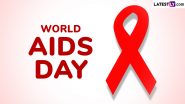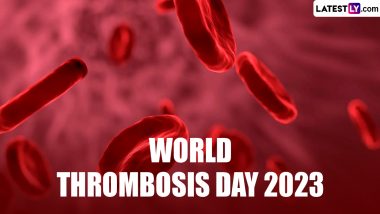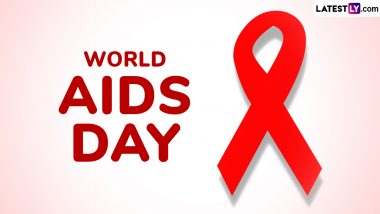World Thrombosis Day, observed on October 13th each year, is a global initiative aimed at raising awareness about thrombosis, its causes, risk factors, and prevention. Thrombosis is a condition characterized by the formation of blood clots within blood vessels, which can lead to serious health complications if not detected and managed in a timely manner.
World Thrombosis Day Date & History
World Thrombosis Day was initiated by the International Society on Thrombosis and Haemostasis (ISTH) to address the global burden of thrombosis and to advocate for greater awareness and action. Since its inception, it has gained momentum, with healthcare professionals, patient organizations, and advocates worldwide participating in educational campaigns, seminars, and events.
The day aims to dispel common misconceptions about thrombosis, such as the belief that it only affects the elderly. In reality, thrombosis can strike people of all ages, and awareness is crucial for early detection and prevention.
World Thrombosis Day Significance
World Thrombosis Day was established in 2014 to shed light on the often under-recognized and underestimated problem of thrombosis. Thrombosis is a common yet often overlooked medical condition. World Thrombosis Day educates the public about the risk factors, symptoms, and consequences of thrombosis. Timely intervention and proper management of thrombosis can prevent life-threatening complications, such as pulmonary embolism and stroke. This day emphasizes the importance of early diagnosis and treatment.
Advances in thrombosis research can lead to better prevention and treatment options. Lifestyle factors, such as physical inactivity and smoking, can increase the risk of thrombosis. This day advocates for healthy living to reduce the chances of developing blood clots.
What is Thrombosis?
Thrombosis occurs when a blood clot forms inside a blood vessel, disrupting the normal flow of blood. There are two primary types of thrombosis:
- Venous Thrombosis: This type of thrombosis occurs in veins, typically in the legs (deep vein thrombosis or DVT) or in the lungs (pulmonary embolism or PE). It can lead to swelling, pain, and in severe cases, life-threatening complications.
- Arterial Thrombosis: Arterial thrombosis occurs in arteries, potentially blocking blood flow to vital organs like the heart or brain. It can result in heart attacks or strokes.
World Thrombosis Day: How to Get Involved
Individuals and organizations can participate in World Thrombosis Day by:
- Spreading Awareness: Share information about thrombosis on social media, in your community, or through educational campaigns.
- Educating Yourself: Learn about the risk factors for thrombosis and how to recognize its symptoms.
- Supporting Thrombosis Research: Contribute to research efforts aimed at improving the understanding and management of thrombosis.
- Promoting a Healthy Lifestyle: Encourage physical activity, a balanced diet, and smoking cessation to reduce the risk of thrombosis.
World Thrombosis Day serves as a reminder that thrombosis is a significant global health issue that can affect anyone. By raising awareness, advocating for research, and promoting a healthy lifestyle, we can work together to reduce the impact of thrombosis and improve the lives of individuals at risk of this condition.
(This article is written for an informative purpose and should not be substituted for medical advice. Kindly consult your doctor before trying any tips.)
(The above story first appeared on LatestLY on Oct 12, 2023 09:41 AM IST. For more news and updates on politics, world, sports, entertainment and lifestyle, log on to our website latestly.com).













 Quickly
Quickly




















